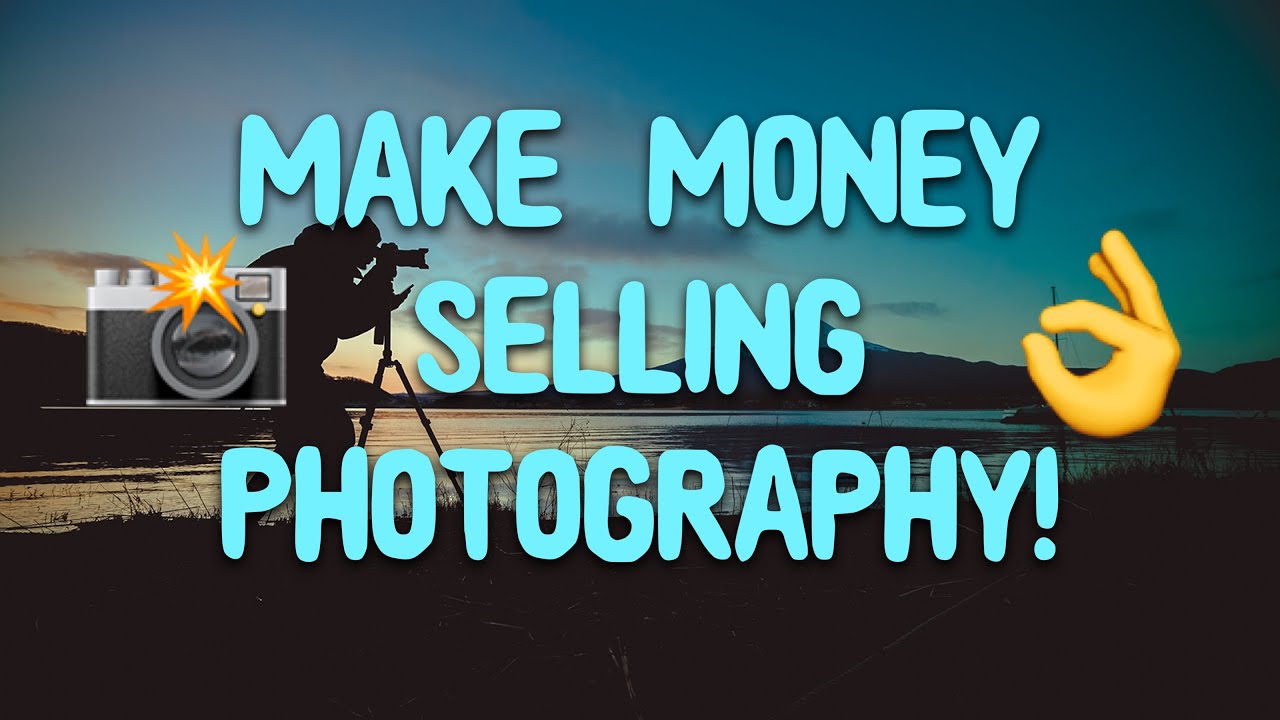Thinking about turning your creative talents into a steady income stream? Shutterstock is a fantastic platform where photographers, designers, and artists can sell their images, videos, and illustrations with just a few simple steps. The best part? You can earn money without needing a full-time job or complex setup. Whether you’re a hobbyist or a seasoned pro, Shutterstock offers an accessible way to monetize your work while keeping things low-effort. Let’s dive into how you can start earning from your creativity and make the most of this popular marketplace!
Understanding Shutterstock’s Platform and Requirements

Before jumping in, it’s helpful to understand how Shutterstock works and what they expect from contributors. Shutterstock is a global marketplace that connects content creators with millions of customers seeking high-quality images, videos, and vectors. The platform makes it pretty straightforward to upload your work and earn royalties whenever someone downloads your files.
Here’s what you need to know:
- Account Setup: Creating an account is simple—just sign up on Shutterstock Contributor. You’ll need to provide some personal info and agree to their terms.
- Content Types Allowed: High-quality photos, videos, vectors, and illustrations are welcome. Make sure your content is original, well-lit, and properly composed.
- Quality Standards: Shutterstock emphasizes high-resolution, sharp, and professional-looking files. Avoid blurry, poorly lit, or over-edited images.
- Submission Guidelines: Each type of content has specific requirements—for example, video length, image size, or vector format. Review their guidelines carefully to ensure compliance.
- Review Process: After you upload your work, Shutterstock reviews it to ensure it meets quality and content standards. This process can take a few days, but once approved, your content becomes available for sale.
Another key point is understanding the royalty structure. Shutterstock pays contributors based on their earnings tier, which depends on your cumulative lifetime earnings. Starting out, you might earn around 15-20% per download, but this can increase as you sell more content.
To keep your earning potential high with minimal effort, focus on creating consistent, high-quality uploads that match popular search trends. Once uploaded and approved, your content can generate passive income as customers continue to purchase it—making Shutterstock a smart platform for earning money with a relatively low ongoing effort.
Tips for Creating High-Quality, Marketable Stock Photos and Videos

When it comes to earning money on Shutterstock, the quality of your photos and videos really makes a difference. Think of your portfolio as your storefront—if what you showcase is sharp, relevant, and appealing, more buyers will be drawn to it. So, how do you create content that stands out and sells? Here are some practical tips to get you started:
Focus on Popular and Evergreen Topics
Research what types of images and videos are trending or consistently in demand. Think of themes like business, technology, health, travel, and everyday life. These are always relevant and likely to attract buyers repeatedly. Use Shutterstock’s own trending sections or browse top-selling images to get ideas.
Invest in Good Equipment
You don’t need the fanciest gear, but decent equipment can significantly improve your content quality. A good camera with high resolution, proper lighting, and clear audio for videos will make your work look professional. Remember, clear and crisp visuals tend to perform better and attract more buyers.
Master Composition and Lighting
Take some time to learn basic photography and videography principles—like the rule of thirds, proper framing, and natural lighting. Natural light, especially during golden hour (shortly after sunrise or before sunset), can make your images look warm and inviting. Well-composed shots with good lighting are more likely to stand out.
Keep It Authentic and Diverse
Stock buyers love authentic, relatable visuals. Avoid overly staged or cheesy setups. Instead, aim for natural expressions, genuine moments, and diverse subjects that reflect real life. Including a variety of people, locations, and scenarios broadens your appeal.
Optimize for Marketability
- Use relevant keywords: Think about what someone might type when searching for your content.
- Include multiple angles and versions: Offer different perspectives or slight variations to increase your chances of sales.
- Respect copyright and model releases: Ensure you have permissions, especially for recognizable people or private property.
Stay Consistent and Keep Learning
Finally, the more you create, the better you’ll get. Keep an eye on what sells best, learn from feedback, and continually refine your skills. Over time, you’ll develop an eye for what works and build a portfolio that attracts steady income with less effort.
Strategies to Automate and Simplify Your Content Submission Process

Once you start creating high-quality content, the next step is making the submission process as smooth as possible. Let’s face it—uploading and managing hundreds of files can become time-consuming. But don’t worry! There are ways to automate and streamline this process so you can focus more on creating than on managing.
Use Bulk Upload Tools
Most stock platforms, including Shutterstock, offer bulk upload features. Prepare all your files with proper keywords, titles, and descriptions beforehand in a spreadsheet. Then, upload multiple files at once, saving you hours of repetitive work. Some third-party tools or scripts can also help automate batch uploads if you deal with large volumes regularly.
Leverage Metadata Templates
Create templates for your keywords, titles, and descriptions. When you upload new content, simply tweak the relevant details instead of starting from scratch each time. This consistency saves you time and helps maintain SEO best practices for your images and videos.
Automate Keywording and Tagging
There are tools and software that can suggest keywords based on your image or video content. Some AI-powered tools analyze your media and generate relevant tags automatically. Using these can speed up the process and improve the discoverability of your content.
Organize Your Files Systematically
Keep your files organized on your computer with clear folder structures—by theme, date, or content type. When you’re ready to upload, you can easily locate and select files without wasting time searching. Consistent organization reduces errors and makes bulk processing more efficient.
Automate Routine Tasks with Scripts or Third-Party Apps
If you’re tech-savvy, consider using scripts or automation tools like Zapier or IFTTT to connect different platforms and automate repetitive steps, such as file renaming, metadata updating, or notifications when new content is uploaded.
Schedule Uploads and Updates
Set aside dedicated times for batch uploading or updating your portfolio. Using calendar reminders or scheduling tools ensures you stay consistent without feeling overwhelmed. Regular uploads keep your portfolio active and appealing to buyers, and automation helps you stick to your schedule effortlessly.
By implementing these strategies, you’ll turn what could be a tedious process into a streamlined, almost hands-free system. The more automated your workflow, the more time you can devote to creating new content—making earning from Shutterstock a sustainable and low-effort side income over time.
Maximizing Earnings with Passive Income Techniques
So, you’ve started uploading your images and videos to Shutterstock—awesome! But if you’re looking to make the most of your efforts without constantly grinding away, passive income techniques are the way to go. The idea is simple: set things up once, and let your assets generate income over time with minimal ongoing effort.
One of the best ways to do this is by focusing on evergreen content. These are images and videos that remain relevant year after year—think of beautiful landscapes, professional business scenes, or timeless objects. When you create high-quality, versatile content, it keeps selling long after you’ve uploaded it.
Another tip is to optimize your keywords and descriptions. Think of this as your content’s storefront—if it’s easy to find, it will sell more. Use relevant, specific keywords that accurately describe your work, and include popular search terms. This increases the chances of your assets appearing in searches and generating sales passively.
Additionally, consider creating a diverse portfolio. Different types of content appeal to different buyers—stock agencies often see sales from various industries like marketing, education, or design. By broadening your range, you increase your chances of consistent sales without actively promoting each individual asset.
Lastly, keep an eye on trending topics and seasonal content. For example, holiday-themed images or current events can spike in demand, bringing in extra income. Once you upload such content, it can keep selling for months or even years, providing a steady stream of passive income.
Remember, the key to maximizing earnings with passive income is consistency and quality. The more high-quality, well-optimized assets you have in your portfolio, the more reliable your income stream becomes—without needing to create new content every day.
Common Mistakes to Avoid When Selling on Shutterstock
While Shutterstock can be a fantastic platform to earn money from your creative work, there are some common pitfalls that many newcomers fall into. Knowing these in advance can save you time, effort, and frustration—and help you succeed faster.
1. Ignoring Quality Standards: Shutterstock has strict quality guidelines. Uploading blurry, poorly lit, or poorly composed images will lead to rejection and wasted effort. Always strive for sharp, well-exposed, and well-framed content that meets their technical requirements.
2. Overusing or Misusing Keywords: Keywords are crucial for discoverability, but stuffing your metadata with irrelevant terms or using misleading keywords can hurt your reputation and sales. Be honest, accurate, and strategic with your keyword choices.
3. Not Doing Market Research: Uploadting random content without understanding what buyers are looking for can result in few sales. Spend some time researching popular categories, trending topics, and what types of images are in high demand.
4. Ignoring Consistent Uploading: Success on Shutterstock often depends on regular uploads. If you only upload sporadically, your portfolio may stagnate. Aim for consistent contributions to keep your portfolio active and visible.
5. Forgetting to Model Releases: For images featuring people, model releases are essential. Not including them can restrict your images from being sold for commercial use. Always ensure you have proper releases signed and uploaded.
6. Not Protecting Your Work: While Shutterstock handles licensing, it’s important to watermark your images before uploading or sharing your work elsewhere to prevent unauthorized use.
In summary, avoid these common mistakes to build a reputable and profitable portfolio. Focus on quality, relevance, consistency, and proper documentation, and you’ll be on your way to earning more with less hassle. Happy uploading!
Additional Resources to Boost Your Shutterstock Earnings
To maximize your income on Shutterstock with minimal effort, leveraging external resources can be highly beneficial. These tools and platforms help you improve your content quality, stay updated with industry trends, and optimize your portfolio for higher visibility and sales.
Online Courses and Tutorials: Platforms like Udemy, Skillshare, and YouTube offer tutorials on photography, graphic design, and video editing. Investing a little time in learning new skills can enhance the quality of your submissions, leading to increased earnings.
Design and Editing Software: Using advanced tools such as Adobe Photoshop, Lightroom, or Canva can help you create more appealing and professional-looking images and graphics. Many of these programs also offer free trials or discounted student licenses.
Stock Market and Trend Analysis Tools: Websites like Google Trends, Shutterstock’s own trending sections, and social media platforms can give insights into what types of content are currently popular. Creating content aligned with trending topics increases the chances of sales with less effort.
Community and Forums: Joining Shutterstock contributor forums and communities on platforms like Reddit or Facebook enables you to exchange tips, get feedback, and learn from experienced contributors. Networking can also uncover opportunities for collaboration or niche markets.
| Resource Type | Examples | Benefits |
|---|---|---|
| Learning Platforms | Udemy, Skillshare, YouTube | Skill enhancement, new techniques |
| Design Software | Adobe Photoshop, Canva | Professional-quality content creation |
| Trend Tools | Google Trends, Shutterstock Trending | Identify popular content topics |
| Community Forums | Reddit, Facebook Groups | Networking, feedback, tips |
Utilizing these resources effectively can streamline your content creation process, keep you informed about market demands, and help you grow your Shutterstock earnings with less effort over time.


